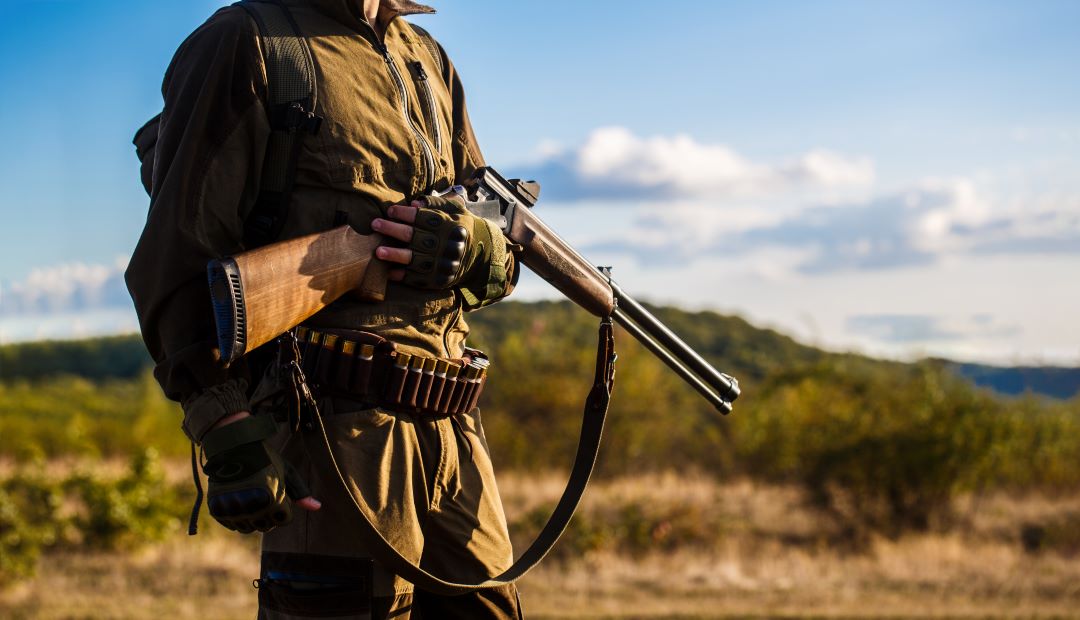Features of Hunting in the Winter Period

When talking about winter, for some reason, the first thing that comes to mind is a picturesque scene – a quiet January evening, a cozy country house’s living room, a blazing fire in the fireplace, and the host holding a cup of hot mulled wine. And to some extent, this is a reality since each of us can indulge in at least one weekend in such a style, booking a cottage or a house at a vacation base.
However, it’s essential not to forget that we live in a northern country – winter can last half a year, and solitary evenings with a glass of wine can turn you into ordinary idlers, abusing alcoholic beverages. But that’s not our way, so various forms of physical activity should be practiced throughout the year, regardless of nature’s whims.
The options are quite broad: you can go for a run on skis through the snowy forest on a frosty sunny morning or sit by a fishing hole, waiting for the catch. Let’s choose the most interesting and thrilling option from the possibilities and talk about winter hunting.
The forest during this time of the year can be truly enchanting: the ringing silence is only broken by the sound of your steps on the crisp snow, and the snow-covered fir tree branches occasionally resemble unseen creatures, adding a touch of mystique. And thinking more down-to-earth, taking a long walk with a gun will provide you with a considerable amount of positive emotions and give endurance to your body, serving as a full-fledged alternative to a gym workout.
Despite the deceptive tranquility, life in nature during this time of the year does not freeze. These places are still rich in game – hoofed animals and fur-bearing beasts are abundant, and many steppe and field representatives are also present. Therefore, winter hunting can be no less captivating. Considering that in half of our regions, snow covers the ground from late October to early April, wasting this time without active outings would be simply foolish. Legislative acts regarding the period during which hunting is allowed vary depending on the region, so it’s crucial to familiarize yourself with them in advance, as hefty fines for violations of these rules are not uncommon.
There are undoubtedly both positive and negative aspects of hunting in the winter period. To the mentioned advantages, you can add the complete absence of mosquitoes and other bloodsucking pests that annoy hunters during warmer times of the year. The drawbacks are quite evident: it’s the weather, of course. But no one forces you to venture into the forest in forty-degree frost or severe blizzards. With a smart choice of weather conditions, this point is almost entirely negated.
Another downside is the hibernation of some animals and the absence of marsh and waterfowl game, which migrate to warmer regions for the winter. However, as we have already noted, there is still plenty of wildlife in the forest, so this drawback can be mentioned only in passing. Hunting for hares or foxes, and setting traps for wolves will be a worthy alternative. Moreover, even hunting for bears in winter is possible; you just need to disturb the hibernating creature in its den. Some plan the possibilities for hunting in warmer seasons, setting up hides or building stands for boar hunting in winter – here the principle “prepare your sleighs in summer” fully applies.
The peculiarities of winter hunting impose their requirements for equipment, providing comfort and safety for outdoor activities. Hunting clothing should be warm yet not restrict movement. There’s no point in going if you’re as clumsy as an elephant since your main action will be to quickly raise your gun and take a shot at the target. Ideally, the clothing should be of non-bright colors – animals will avoid a hunter dressed in fashionable, acid-colored ski wear from a kilometer away, so hunting camouflage clothing in the winter is half the battle. As you understand, the winter forest is dominated by black and white shades: snowy drifts and bare tree branches make the landscape quite monotonous. This makes them an ideal color scheme for a hunting camouflage clothing, and if you don’t have one, it’s highly recommended to get a camouflage cloak.
For footwear, insulated boots are recommended: even in the winter forest, the chance of falling into an unfrozen pond or stream under a layer of ice is not zero. In your backpack, you should have some food and drinks, bags for the game, extra warm socks, a knife, and a lighter for unexpected situations. And last in the sequence of enumerations, but not in significance, is a pair of wide hunting skis. Without them, it’s better not to venture into the forest during this time of the year. The list of hunting methods in winter is practically the same as in summer, with only some changes and adjustments. The most common is still stalking: it doesn’t require a large group or elaborate planning; it’s a kind of impromptu, where actions depend on the situation. It is mainly used for hunting birds, for example, when going after grouse. Drives and beat hunts are suitable for numerous groups, often involving dogs. This is the realm of truly devoted hunters as it requires a completely different level of planning. But the rewards here are incomparable – this is how people hunt for more organized animals, such as moose, roe deer, or lynx. Training hounds requires special skill and effort, but the hard work pays off – a well-trained dog can read tracks excellently, drive the game toward the shooter, and in case of attack from the animal’s side, become a faithful defender of its owner.
Tracking is used to find the lair of a small game; it requires tracking skills and extraordinary perseverance, as sometimes you can follow the animal quite far based on its pawprints. Additionally, on some small animals, like minks, you can set traps and snares: it’s quite effective, although not the most sportsmanlike method; the decision is up to you. Classic ambushes may seem like the easiest way to hunt for an outsider, but it’s hardly the case: waiting for the game, you can sit for hours without moving, making no sound, and having no opportunity to drink tea or have a snack. However, it is one of the most versatile methods; it can be used to hunt for almost any animal: wild boar, moose, otter, and many others.
We hope we’ve convinced you that winter is not the time to hibernate; let’s leave that to the bears. Happy hunting!








